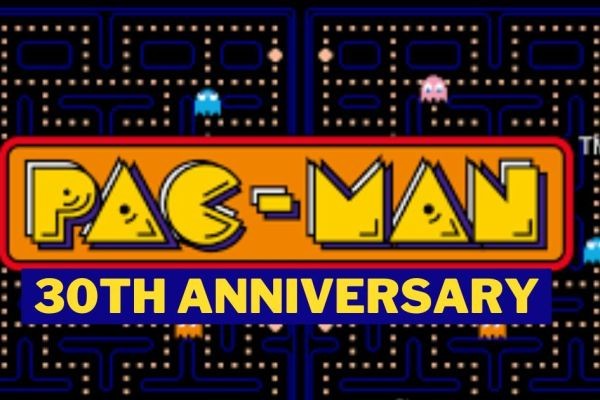This article isn’t about setting high scores. It’s about looking at the gameplay from a slightly different angle – understanding it as a very simplified, yet engaging, model for store management. Ready to see the world through Pac-Man's power pellet goggles? Let's dive in!
A Quick Bite: The Gameplay (From a Managerial Perspective)
For those who’ve been living under a rock (or a ghost-proof barrier), here's the gist of Pacman 30th Anniversary . You control Pac-Man, navigating a maze filled with pellets. Your objective? Eat all the pellets to clear the level while avoiding four pesky ghosts: Blinky, Pinky, Inky, and Clyde. Scattered throughout the maze are larger “power pellets” that temporarily turn the tables, allowing you to chase and consume the ghosts.
Now, let's translate this to a store management scenario.
- Pac-Man = You, the Store Manager: You're responsible for the overall performance and success of your "store" (the maze).
- Pellets = Inventory/Resources: These are the valuable items you need to collect (sell) to achieve your objectives (profit).
- Ghosts = Challenges/Risks: These represent potential problems like stock shortages, customer complaints, competitor actions, or even technical glitches.
- Power Pellets = Strategic Advantages/Special Offers: These are opportunities to temporarily mitigate risks or boost your performance, like a well-placed sale, a marketing campaign, or a new supplier.
- Maze = Store Layout/Environment: This represents the physical space of your store and how customers navigate it.
In Pacman 30th Anniversary, success depends on efficiently collecting pellets while dodging ghosts. In store management, it's about maximizing sales while minimizing risks and optimizing the customer experience. See the connection?
Each level in Pac-Man presents a slightly different maze layout, forcing you to adapt your strategy. Similarly, in the real world, market conditions, seasonal changes, and competitor actions constantly demand adjustments to your business strategy.
Managing Your Maze: Tips from a Virtual Manager
Here are some tips, inspired by Pacman 30th Anniversary, that can be applied to both the game and, in a more abstract way, to store management:
-
Plan Your Route (Inventory Management): Don’t just randomly munch on pellets! Think about the most efficient path to collect the most resources (pellets) with minimal risk. In store management, this translates to effective inventory management – knowing what products are in demand, forecasting future needs, and minimizing waste.
-
Monitor Your Enemies (Competitor Analysis): Pay close attention to the ghosts’ movement patterns. Are they aggressive and predictable, or do they employ cunning strategies? This is like keeping a close eye on your competitors. What are their strengths and weaknesses? What promotions are they running? Understanding your competition helps you stay ahead.
-
Exploit Weaknesses (Identifying Opportunities): Ghosts are vulnerable after you eat a power pellet. Identify those moments of weakness and capitalize on them. In business, this means recognizing market opportunities, whether it's a new product trend, an underserved customer segment, or a temporary lapse in your competitor's service.
-
Prioritize (Focus on Key Areas): Sometimes, avoiding a ghost is more important than grabbing a few extra pellets. Learn to prioritize your tasks and focus on the most critical issues. In store management, this could mean focusing on resolving a major customer complaint instead of simply restocking shelves.
-
Adapt and Improvise (Stay Agile): The ghosts' behavior can be unpredictable. Be prepared to adjust your strategy on the fly. The same applies to store management. Be ready to adapt to changing market conditions, unexpected events, and customer feedback. Don't be afraid to experiment and try new approaches.
-
Use Your Advantages Wisely (Strategic Promotions): Don't waste those power pellets! Use them strategically when you're surrounded by ghosts or need to clear a particularly challenging area of the maze. Similarly, deploy your "power pellets" (promotions, discounts, marketing campaigns) at the right time and in the right way to maximize their impact.
-
Learn from Your Mistakes (Data Analysis): Every time you get caught by a ghost, you learn something about their patterns. Analyze your failures (and successes) to identify areas for improvement. In store management, this means tracking your sales data, analyzing customer feedback, and understanding the impact of your marketing efforts.
Game Over? Never! (The Learning Process)
Okay, so running a store isn't exactly like playing Pacman 30th Anniversary. But the underlying principles of resource management, risk assessment, and strategic thinking are surprisingly relevant. By viewing the game as a simplified model, you can practice these skills in a fun and engaging way.
Think of each game as a learning experience. What worked? What didn't? How could you have done better? By applying these principles to both the virtual world of Pac-Man and the real world of store management, you can level up your strategic thinking and improve your ability to navigate complex situations.
So, next time you find yourself playing Pacman 30th Anniversary, remember that you're not just chasing ghosts and gobbling pellets. You're honing your management skills, one power pellet at a time! Now go out there and conquer that maze – or, you know, that store!

